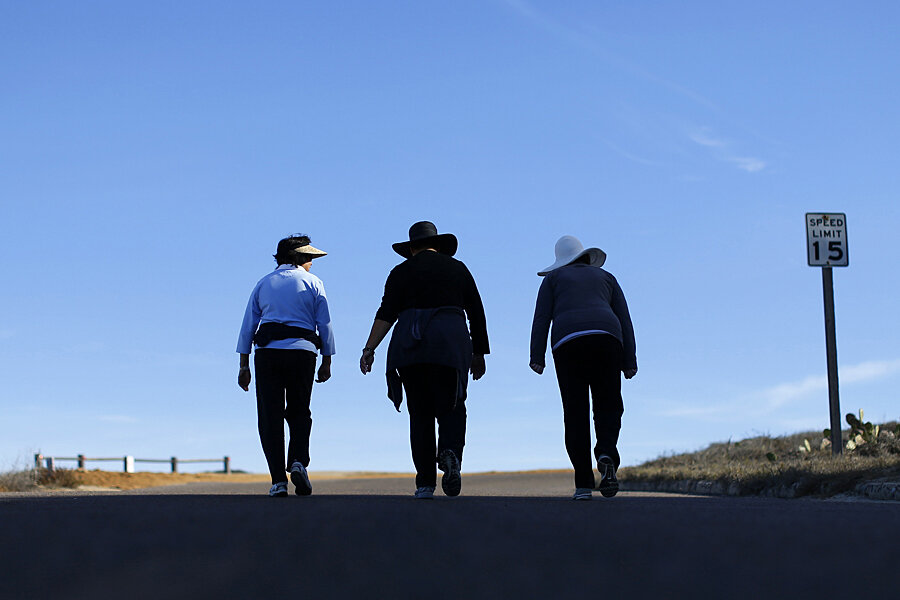New technology puts the power in 'power walking'
Loading...
You may have heard how the jaw movement from talking or chewing can be turned into useable energy. Now scientists have found a way to harness the energy of something equally simple: walking.
The amount of energy produced by it isn’t nearly enough to power something like an electric car, but watch batteries -- yes.
Researchers at the Center for Research in Advanced Materials (CIMAV) have designed a small, flat cylinder that fits in a shoe and stores the mechanical-vibrational energy that a human creates by walking.
The scientists then used the captured energy to recharge AAA batteries and even self-powered clocks. (Related: New York State’s Solar-Friendly Policies Could Become a Model)
To fit in a shoe, the prototype designed by the Mexican national research lab Centro de Investigación en Materials Avanzados (CIMAV) had to be small. It’s about two inches in diameter and about one-tenth of an inch thick, and is attached to the insole of a shoe.
CIMAV’s chief of research, Abel Macias Hurtado, described the device as “piezoelectric” device, i.e., one that converts force, pressure and acceleration into microwatts, which are stored in the tablet-shaped device for future use.
The setup for the device was fairly straightforward, Hurtado said. The prototype was placed in an ordinary shoe with a wide sole. Every step a person takes in the shoe puts pressure on the device, which creates piezoelectric energy.
What’s especially important about his prototype is that it’s already succeeded in one of its chief goals: producing clean energy. Now, Hurtado said, the primary goal has been narrowed to generating more power more efficiently.
A second goal is to apply the same technology to floor mats placed at entrances to mass transit system like subways. The constant flow of foot traffic might generate enough electricity to power the lights inside.
“Today, the energy generated by people walking is wasted,” Hurtado said. “If we learn to harvest it and turn it into electricity, we can contribute to the global impact.” (Related: Fed Up With Federal Inaction, States Act Alone on Cap-and-Trade)
Hurtado and his team aren’t alone in giving new meaning to “power walking.” Back when he was a student at Carnegie Mellon University in Pittsburgh, Matthew Stanton came up with much the same idea as he walked around campus one day with a dead cell phone and no charger.
Stanton, a mechanical engineering major, was on a team in a design class whose task was to create a device that would specifically help students. He and another student in that class, Hahna Alexander, got to work and developed a piezoelectric device not unlike Hurtado’s.
Now Stanton and Alexander are the co-founders of a company called SolePower that produces an insole that operates on the principal of converting pressure into electricity. The device weighs less than five ounces and fills the need that inspired the invention: It charges cell phones.
More Top Reads From Oilprice.com:
- New Cellulosic Ethanol Plant Commercializes Renewable Fuel
- Wind Power Finally Takes Hold In United States
- Geothermal Power Gathering Steam in U.S.
Source: http://oilprice.com/Alternative-Energy/Renewable-Energy/New-Technology-Could-Have-Us-Generate-Power-As-We-Walk.html





